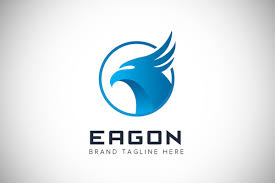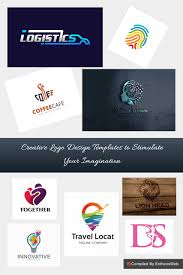The Importance of a Well-Designed Logo for Your Graphic Design Company
When it comes to establishing a strong brand identity for your graphic design company, one of the most crucial elements is your logo. A well-designed logo serves as the visual representation of your company and plays a significant role in creating brand recognition and loyalty among your target audience.
Here are some key reasons why having a professionally crafted logo is essential for your graphic design business:
- Brand Recognition: A unique and memorable logo helps customers easily identify and remember your company. It sets you apart from competitors and creates a lasting impression.
- Credibility: A well-designed logo conveys professionalism and expertise, instilling trust in potential clients. It reflects the quality of services you offer and can influence purchasing decisions.
- Consistency: Your logo should be consistent across all marketing materials, including business cards, websites, social media profiles, and promotional items. Consistency builds brand cohesion and reinforces brand identity.
- Versatility: A good logo is versatile and can be scaled to different sizes without losing its impact. It should look equally impressive on both digital and print media.
In conclusion, investing in a well-designed logo for your graphic design company is crucial for building a strong brand presence, attracting clients, and fostering trust in your services. Remember that your logo is often the first point of contact between your business and potential customers, so make it count!
6 Benefits of a Graphic Design Company Logo: Boosting Brand Recognition and Loyalty
- Enhances brand recognition
- Creates a professional image
- Builds credibility and trust
- Sets you apart from competitors
- Provides visual consistency across marketing materials
- Increases memorability and brand loyalty
Challenges of Creating a Graphic Design Company Logo: High Costs, Time Investment, Rebranding Hurdles, and Similarity Risks
Enhances brand recognition
Enhancing brand recognition is a significant advantage of having a well-designed logo for a graphic design company. A visually appealing and memorable logo serves as a powerful visual cue that helps customers easily identify and remember the brand. By consistently using the logo across various marketing materials and platforms, the company can establish a strong visual presence in the minds of its target audience. This increased brand recognition not only differentiates the company from competitors but also fosters trust and loyalty among customers, ultimately contributing to long-term success and growth.
Creates a professional image
Having a well-designed logo for your graphic design company creates a professional image that instills trust and credibility in the eyes of your target audience. A professionally crafted logo reflects the quality of your services and showcases your commitment to excellence. It sets the tone for your brand identity, positioning your company as a reputable and reliable choice in the competitive market. A professional logo not only attracts potential clients but also leaves a lasting impression that reinforces the perception of your company as a leader in the industry.
Builds credibility and trust
A professionally designed logo for a graphic design company plays a vital role in building credibility and trust with clients. A well-crafted logo conveys a sense of professionalism and expertise, showcasing the company’s commitment to quality and attention to detail. When customers see a thoughtfully designed logo, they are more likely to trust the business behind it, making it easier to establish long-lasting relationships and attract new clients.
Sets you apart from competitors
Having a well-designed logo for your graphic design company sets you apart from competitors by creating a unique visual identity that distinguishes your brand in a crowded marketplace. A distinctive logo helps to capture the attention of potential clients and leaves a lasting impression, showcasing your company’s creativity and professionalism while highlighting what makes you stand out among your competition. Through a thoughtfully crafted logo, you can communicate your brand’s values and personality, ultimately attracting customers who resonate with your unique visual representation.
Provides visual consistency across marketing materials
One significant advantage of having a well-designed logo for a graphic design company is that it provides visual consistency across all marketing materials. By incorporating the logo into various platforms such as business cards, websites, social media profiles, and promotional items, companies can establish a cohesive brand identity. This consistency not only enhances brand recognition but also reinforces the professionalism and reliability of the business in the eyes of customers. The logo serves as a visual anchor that ties all marketing efforts together, creating a unified and memorable brand presence that resonates with target audiences.
Increases memorability and brand loyalty
An excellently crafted logo for a graphic design company significantly boosts memorability and brand loyalty among its target audience. A visually appealing and well-thought-out logo has the power to leave a lasting impression on customers, making the company more recognizable and memorable. This increased recognition fosters a sense of trust and familiarity with the brand, ultimately leading to stronger brand loyalty as customers are more likely to choose and remain loyal to a company that they can easily identify and connect with on a visual level.
Costly to design
Designing a professional logo for a graphic design company can pose a significant challenge due to the high costs involved, particularly for smaller firms operating on tight budgets. The expense of hiring skilled designers and investing in quality design tools can be a barrier for these companies looking to establish a strong brand identity. Limited financial resources may force them to compromise on the quality or uniqueness of their logo, potentially impacting their ability to stand out in a competitive market. Balancing the need for a visually appealing logo with budget constraints is a common con that small graphic design companies must navigate when considering their branding strategy.
Time-consuming process
Designing a logo that effectively represents your company’s identity can be a time-consuming process, posing a significant challenge for graphic design companies. The intricate task of creating a logo that encapsulates the essence of a brand demands thorough research, brainstorming, and iterations to achieve the desired outcome. This meticulous process can consume valuable time and resources, potentially causing delays in other essential business activities such as client projects or marketing campaigns. Balancing the need for a compelling logo with the demands of day-to-day operations is crucial to ensure that the branding efforts align seamlessly with overall business objectives.
Difficulty in rebranding
One significant drawback of a graphic design company logo is the difficulty in rebranding. When a company decides to undergo a rebranding process, changing the logo can be a complex and challenging task. Existing clients who are familiar with the old logo may experience confusion or disconnect when introduced to a new design. This transition period can potentially disrupt brand loyalty and recognition, requiring careful planning and communication to ensure a smooth rebranding process without alienating existing clientele.
Risk of similarity
One significant con of creating a graphic design company logo is the risk of similarity. Despite best intentions, there is a chance of unintentionally designing a logo that bears resemblance to another company’s branding. This can result in legal complications, such as trademark infringement, and may lead to brand dilution. It is crucial for graphic designers to conduct thorough research and ensure the uniqueness of their logo designs to avoid any potential conflicts and protect both their clients’ and their own reputation in the competitive market.




